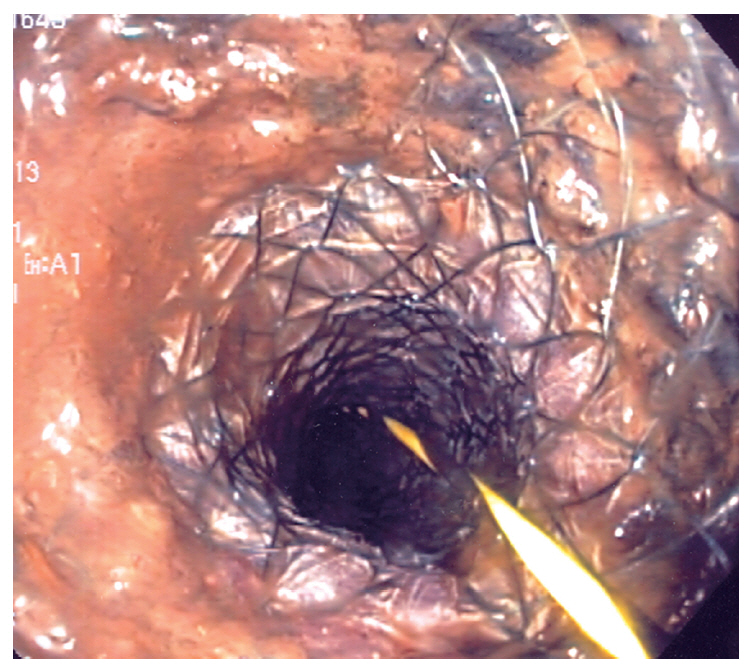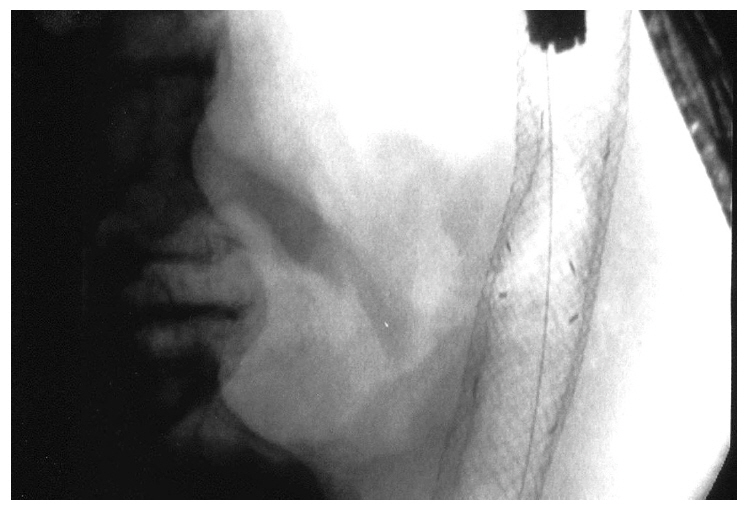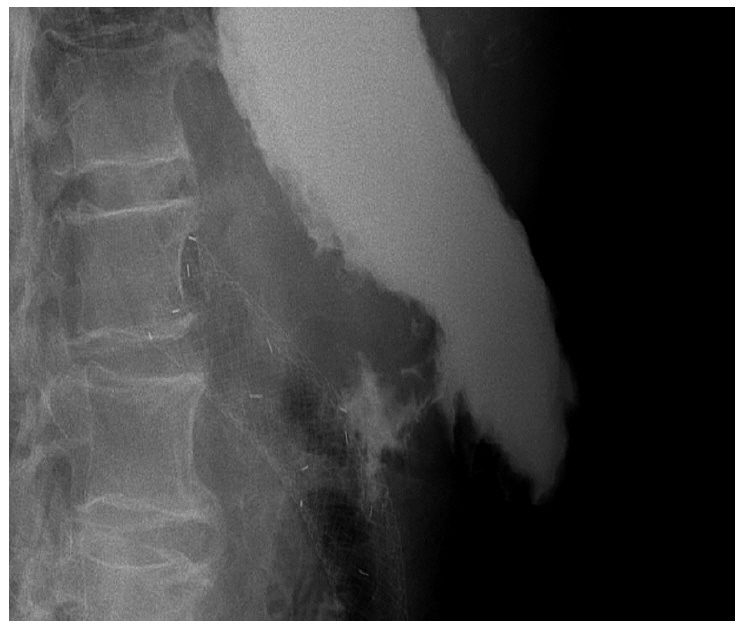Clin Endosc.
2015 Nov;48(6):576-578. 10.5946/ce.2015.48.6.576.
Successful Palliation of a Malignant Cologastric Fistula with a Covered Self-Expanding Metal Stent
- Affiliations
-
- 1Department of Surgical Gastroenterology, Aarhus University Hospital, Aarhus, Denmark. mathbrei@rm.dk
- KMID: 2380420
- DOI: http://doi.org/10.5946/ce.2015.48.6.576
Abstract
- When patients present with malignant cologastric fistulas, the tumor stage is often advanced and management is only palliative. We report the case of a 75-year-old man with a symptomatic cologastric fistula arising from an advanced tumor in the transverse colon, previously stented owing to malignant obstruction. An 8-cm-long covered self-expanding metal stent (COMVI enteral colonic stent; Taewoong Medical) was placed inside the primary stent, which sealed the fistula and completely alleviated the symptoms. Considering the successful outcome, we propose that insertion of a covered stent be considered in the palliative management of patients with malignant cologastric fistulas.
Keyword
Figure
Reference
-
1. Low DE, Kozarek RA. Comparison of conventional and wire mesh expandable prostheses and surgical bypass in patients with malignant esophagorespiratory fistulas. Ann Thorac Surg. 1998; 65:919–923.
Article2. May A, Hahn EG, Ell C. Self-expanding metal stents for palliation of malignant obstruction in the upper gastrointestinal tract. Comparative assessment of three stent types implemented in 96 implantations. J Clin Gastroenterol. 1996; 22:261–266.3. Hu Y, Zhao YF, Chen LQ, et al. Comparative study of different treatments for malignant tracheoesophageal/bronchoesophageal fistulae. Dis Esophagus. 2009; 22:526–531.
Article4. Abadal JM, Echenagusia A, Simo G, Camunez F. Treatment of malignant esophagorespiratory fistulas with covered stents. Abdom Imaging. 2001; 26:565–569.
Article5. Matsuo S, Eto T, Ohara O, Miyazaki J, Tsunoda T, Kanematsu T. Gastrocolic fistula originating from transverse colon cancer: report of a case and review of the Japanese literature. Surg Today. 1994; 24:1085–1089.
Article6. Stamatakos M, Karaiskos I, Pateras I, Alexiou I, Stefanaki C, Kontzoglou K. Gastrocolic fistulae: from Haller till nowadays. Int J Surg. 2012; 10:129–133.
Article7. Forshaw MJ, Dastur JK, Murali K, Parker MC. Long-term survival from gastrocolic fistula secondary to adenocarcinoma of the transverse colon. World J Surg Oncol. 2005; 3:9.8. Casey J, Lorenzo G. Gastrocolic fistula. J Natl Med Assoc. 1986; 78:330–332.9. Marshall SF, Knud-Hansen J. Gastrojejunocolic and gastrocolic fistulas. Ann Surg. 1957; 145:770–782.
Article10. Sebastian S, Johnston S, Geoghegan T, Torreggiani W, Buckley M. Pooled analysis of the efficacy and safety of self-expanding metal stenting in malignant colorectal obstruction. Am J Gastroenterol. 2004; 99:2051–2057.
Article11. Shim CS, Cho JY, Jung IS, et al. Through-the-scope double colonic stenting in the management of inoperable proximal malignant colonic obstruction: a pilot study. Endoscopy. 2004; 36:426–431.
Article
- Full Text Links
- Actions
-
Cited
- CITED
-
- Close
- Share
- Similar articles
-
- A Comparative Study on the Efficacy of Covered Metal Stent and Plastic Stent in Malignant Biliary Obstruction
- Malignant Cologastric Fistula: Report of three cases
- Stepwise Algorithmic Approach to Endoscopic Removal of Biliary Partially Covered and Uncovered Self-Expanding Metal Stents (with Videos)
- A Case of Spontaneous Esophagopleural Fistula Successfully Treated by Endoscopic Stent Insertion
- Endoscopic Stent Placement in the Palliation of Malignant Biliary Obstruction




